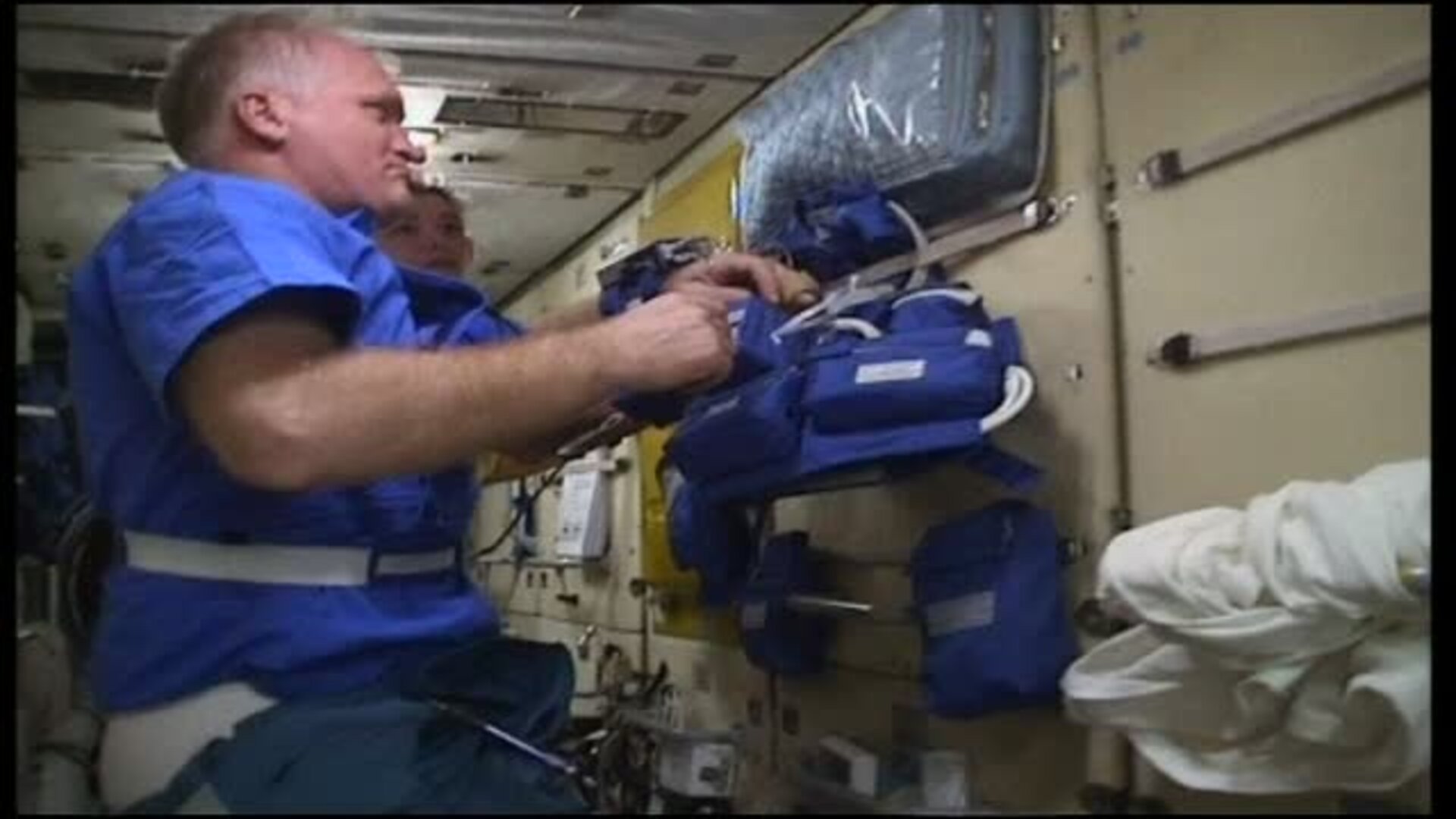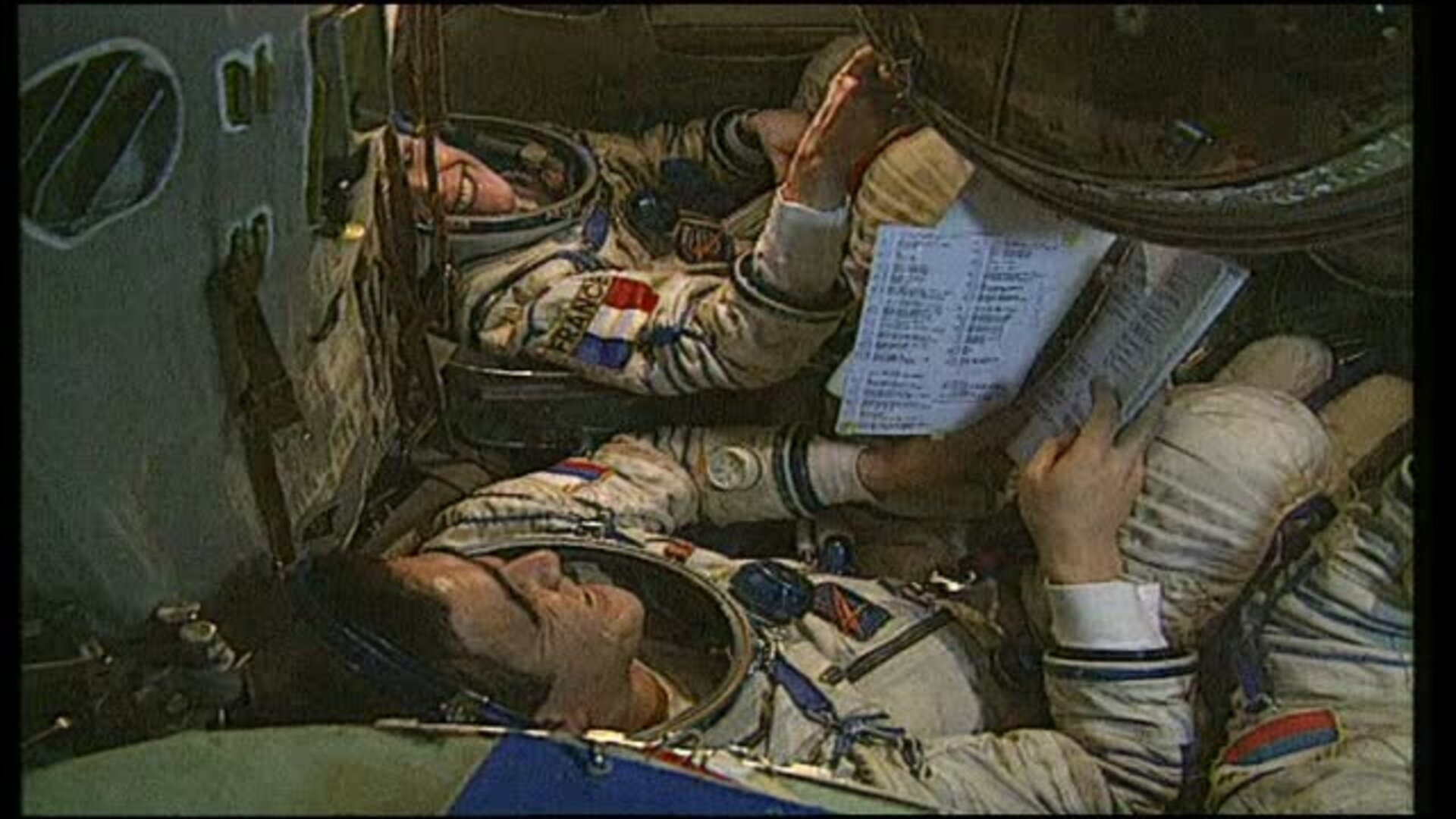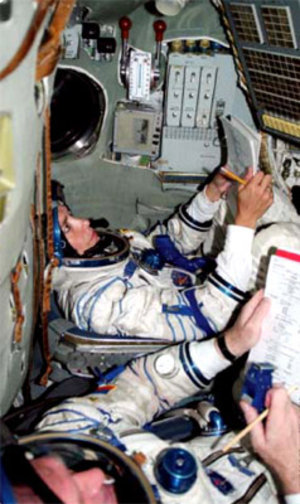Claudie Haigneré (formerly Claudie André-Deshays)
Born 13 May 1957 in Le Creusot, France. Married with one daughter, her husband is Jean Pierre Haigneré, also an ESA astronaut. Claudie enjoys contemporary art (painting, sculpture), reading and sport, especially gymnastics and golf.
Education
Doctor of medicine (rheumatology). Graduated from Faculté de Médecine (Paris-Cochin) and Faculté des Sciences (Paris-VII). Certificates (CES Certificats d’Etudes Spécialisées) in biology and sports medicine (1981), aviation and space medicine (1982) and rheumatology (1984). In 1986 diploma (DEA Diplôme d’Etudes Approfondies) in biomechanics and physiology of movement.
PhD in neuroscience in 1992.
Organisations
Honorary Member of the Société Francaise de Médecine Aéronautique et Spatiale, Corresponding Member of the International Academy of Astronautics (IAA), Honorary Member of the Association Aéronautique et Astronautique de France (AAAF), Member of the Académie de l’Air et de l’Espace (ANAE).
Member of the French Académie des Technologies, member of the French Académie des Sports, Member of the French Académie des Sciences de l’outre mer, Member of the Belgian Academie des Sciences et Techniques.
Docteur Honoris Causa of the École polytechnique fédérale de Lausanne, Switzerland, Docteur Honoris Causa de la Faculté de Mons (Belgique), Professeur Honoris Causa of the University of Beihang in Peking, China.
Patron of the Cité de l’Espace in Toulouse, and of the Institut de Myologie de la Pitié-Salpétrière set up by the Association Française contre les Myopathies (AFM), as well as the Fondation Clarins-Arthritis.
Board member for multiple foundations such Airbus, Loreal and Fondation de France.
Special honours
Grand Officier de l’Ordre de la Légion d’Honneur and Chevalier de l’Ordre National du Mérite,
Russia’s Order of Friendship in recognition of her long involvement in Franco–Russian space cooperation, and Russia’s Medal for Personal Valour,
Commander of the Order of Merit of the Republic of Germany.
In 1996, she received the Grand Siècle Laurent Perrier Prize.
In 1998, the Henry Deutsch de la Meurthe Prize from the Académie des Sports.
In 2006, she was awarded the Louise Weiss Prize.
Aeronautical medal « Médaille de l’Aéronautique »
Experience
From 1984 to 1992, Claudie worked in the Rheumatology Clinic and the Rehabilitation Department and Sport Traumatology at Cochin Hospital in Paris.
From 1985 to 1990, she also worked in the Neurosensory Physiology Laboratory at the Centre National de la Recherche Scientifique (CNRS) in Paris. Her research topics were human adaptation of motor and cognitive systems in weightlessness.
Claudie was selected as a French candidate astronaut in 1985 by France’s CNES space agency.
From 1990 to 1992, she was responsible for French and international space physiology and medicine programmes in the CNES Life Sciences Division in Paris.
From 1989 to 1992, she was responsible for scientific coordination of the life sciences experiments aboard 1992 Franco–Russian Antarès mission.
She regularly took part in parabolic flight campaigns aboard the Zero-G Caravelle.
In October 1992, Claudie was assigned as back-up cosmonaut to Jean-Pierre Haigneré for the Franco–Russian Altair mission of 1–22 July 1993. During this mission, she was responsible for monitoring the biomedical experiments from the Mission Control Centre in Kaliningrad, near Moscow.
From September 1993, Claudie was responsible for coordinating the scientific programme of the Franco–Russian Cassiopée mission and for the French experiments aboard ESA’s EuroMir-94 mission.
In December 1994, she was assigned to the Cassiopée mission as Research Cosmonaut and started training in Star City near Moscow on 1 January 1995. The 16-day mission took place from 17 August to 2 September 1996.
In 1997, she worked in Moscow as the French representative of Starsem, the Franco–Russian company.
In May 1998, Claudie was selected as back-up for Jean-Pierre Haigneré for the Franco–Russian Perseus mission to Mir in February 1999. She trained for EVA and qualified as Cosmonaut Engineer for both the Soyuz vehicle and the Mir space station. During the mission, she was crew interface coordinator at the Mission Control Centre in Korolyev.
In July 1999, she became the first woman to qualify as a Soyuz Return Commander, so that she could now command a three-person Soyuz capsule during an emergency return from space.
On 1 November 1999, Claudie joined the European Astronaut Corps, whose home base is the European Astronaut Centre (EAC) in Cologne, Germany. She took part in ESA development projects for the European Microgravity Facilities for Columbus and supported the medical activities in the Agency’s Directorate of Manned Spaceflight and Microgravity.
In January 2001, she took up training in Star City near Moscow for her assignment for the Andromède mission. In March 2001, she was qualified by ESA/EAC for ISS Basic Training.
From June 2002 to April 2004, Claudie was appointed to the post of Minister for Research and New Technologies by the French Prime Minister.
From April 2004 to June 2005, she served in the French Government as Minister for European Affairs and Secretary General for Franco–German Cooperation.
From November 2005 to September 2009 she was Senior Adviser to ESA’s Director General in European space policy, and ESA’s strategic adaptation .
From October 2009 to February 2015 she was the CEO of Universcience a French science museum that combined the Cité des Sciences and the Palais de la Découverte in Paris. She is part of the innovation jury (Concours Mondial de l’innovation) and chaired the scientific council of the chair du Collège des Bernardins (2014-2016) in Paris: Digital humanism.
From February 2015, she returned to ESA as an adviser to the Director General.
Spaceflight experience
From 17 August to 2 September 1996, on the Cassiopée mission, she performed a wide range of experiments in life sciences (physiology and developmental biology), fluid physics and technology. Following the mission, she attended many scientific workshops and conferences, contributing to improvements in data analysis and preparations for the scientific programmes of future projects.
From 21 to 31 October 2001, Claudie was the first female European astronaut on a ‘taxi flight’ to the International Space Station as Soyuz Flight Engineer. This Andromède mission had two main purposes: to exchange the Soyuz spacecraft used as a crew emergency return vehicle, and to carry out research for CNES during her eight days aboard the Station.









